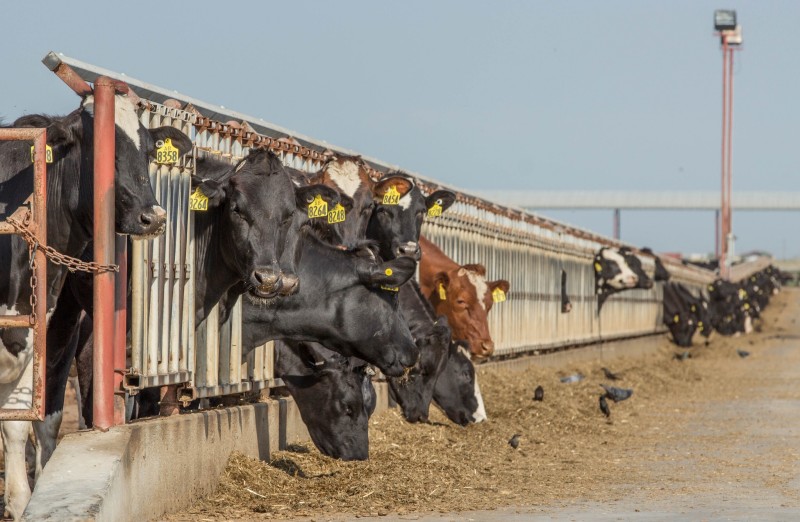Rancho was ordered to recall 8.7 million pounds of meat processed at the facility — which amounted to a full year’s production — in February 2014. Six months later, a federal grand jury indicted two Rancho owners and two workers for processing animals condemned by USDA inspectors and processing others that were known to have eye cancer. All four defendants eventually pleaded guilty.
“We can’t stop criminals, so we hope that with the positions we put in place that we have enough steps to be able to observe any type of anomalies that occur within an establishment to be able to prevent that from occurring again,” Almanza said of the new inspection measures.
Inspections at cattle slaughterhouses are now less predictable, he said. USDA supervisors conduct surprise inspections. “We changed our inspection procedures from partial coverage to full presence of inspectors in the pen areas,” he said.
The new full-time inspectors are being stationed at what the agency describes as “high-risk” plants throughout the country. One of those 32 facilities is the former Rancho Feeding Corp. slaughterhouse, now owned and operated by Marin Sun Farms.
The hiring process for those new inspectors is not yet complete. The union representing food inspectors has filed an unfair labor practice charge against the USDA, blocking the agency’s effort to hire at least 30 new employees, agency spokesman Adam Tarr said via email.
“We are working to resolve union issues so that we can complete hiring,” Tarr said.
The head of the union that represents more than 6,000 inspectors says the new USDA procedures amount to dangerous working conditions for his members.
“To stick a person in the middle of a barn with cows in the middle of the winter in Wisconsin where it’s minus 30 degrees is not acceptable,” Stan Painter, the chairman of the National Joint Council of Food Inspector Locals, said in an interview.
Painter said there are no new talks set to resolve the conflict over the new cattle inspection protocol.
The USDA’s newly disclosed changes represent a step forward for meat safety nationwide and a significant acknowledgement that the USDA had trouble monitoring facilities that process older cows that could be susceptible to disease, according to a consumer watchdog organization that has aggressively monitored the aftermath of the Rancho case.
“This is a recognition that they needed to increase their inspection of those cows before they actually went to slaughter,” said Tony Corbo, a senior lobbyist at Food and Water Watch, a Washington, D.C., public interest group.
“The fact that they are taking this action makes it clear to me that they got the message from Rancho that this could happen in other places, and they are trying to prevent it from occurring again,” Corbo said in an interview.
When inspectors are on hand in holding pens where cows are dropped off before they get inside a slaughterhouse, the government can flag diseased animals earlier on.
“It’s not a fail-safe system,” Corbo said. “If someone is detecting a hole in the inspection process and they have malicious intent, they can probably figure out a way to bypass the inspection system. But this is adding a new layer.”

